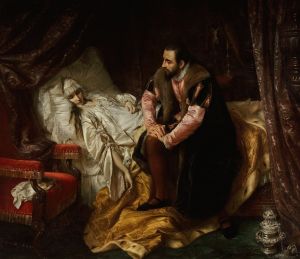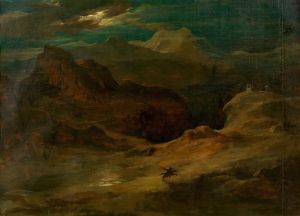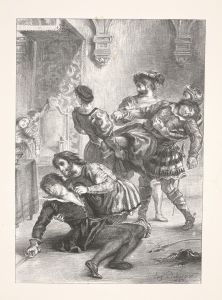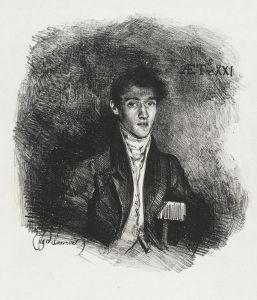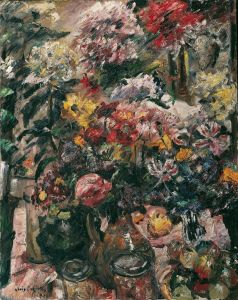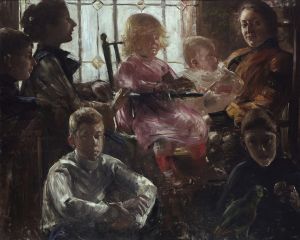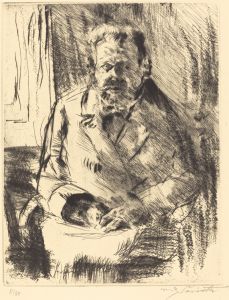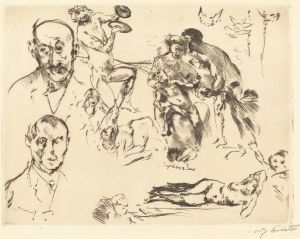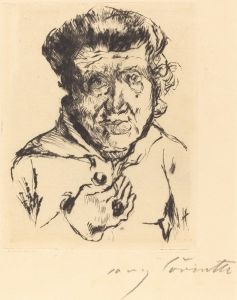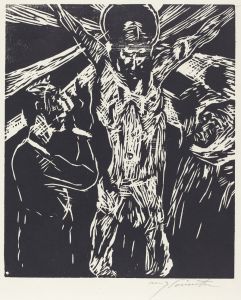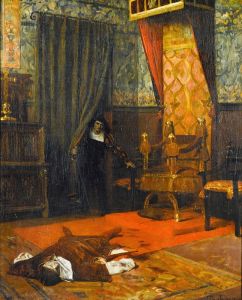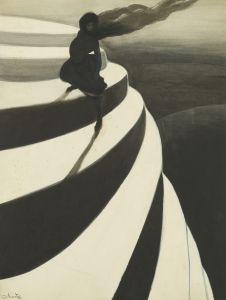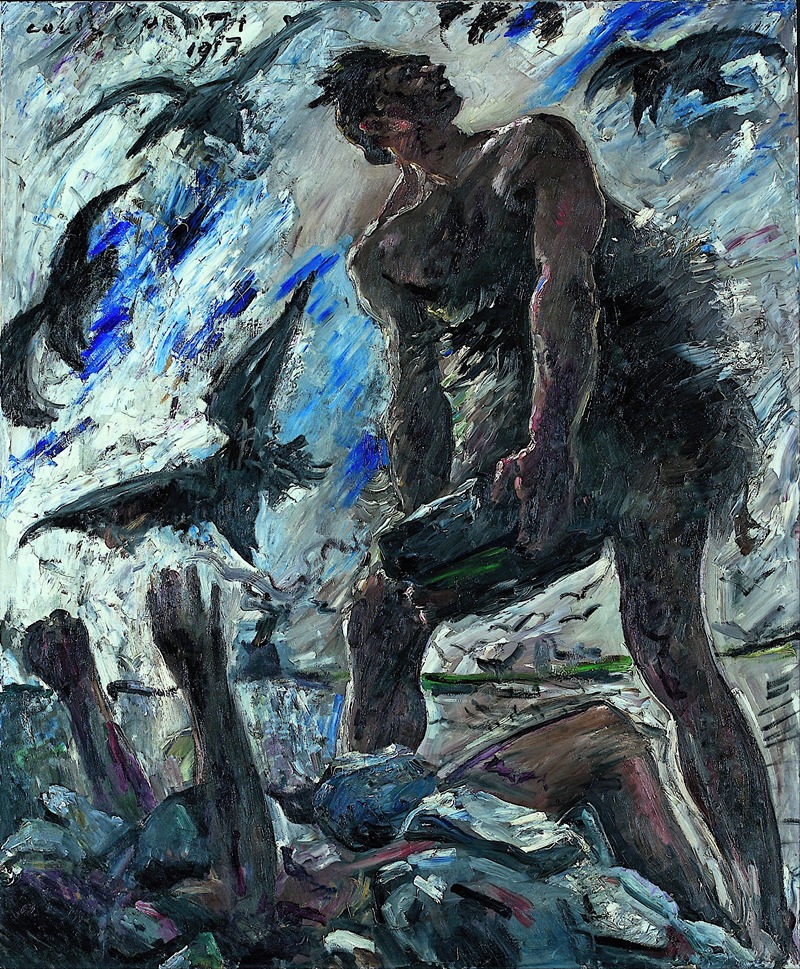
Cain
A hand-painted replica of Lovis Corinth’s masterpiece Cain, meticulously crafted by professional artists to capture the true essence of the original. Each piece is created with museum-quality canvas and rare mineral pigments, carefully painted by experienced artists with delicate brushstrokes and rich, layered colors to perfectly recreate the texture of the original artwork. Unlike machine-printed reproductions, this hand-painted version brings the painting to life, infused with the artist’s emotions and skill in every stroke. Whether for personal collection or home decoration, it instantly elevates the artistic atmosphere of any space.
Lovis Corinth was a German painter and printmaker whose work is associated with the transition from Impressionism to Expressionism in German art. One of his notable works is the painting "Cain," which reflects his interest in biblical themes and his distinctive style that combines realism with expressive brushwork.
The painting "Cain" was created in 1917, during a period when Corinth was deeply engaged with religious and mythological subjects. This work is based on the biblical story of Cain and Abel, found in the Book of Genesis. The narrative tells of the first murder in human history, where Cain, driven by jealousy and anger, kills his brother Abel. This story has been a popular subject in art, symbolizing themes of sin, guilt, and fratricide.
Corinth's interpretation of this story is marked by his dynamic use of color and vigorous brushstrokes, which convey the emotional intensity of the scene. The painting captures the moment of violence and the psychological turmoil of Cain, emphasizing the dramatic and tragic aspects of the biblical tale. Corinth's style during this period was characterized by a loose, expressive technique that allowed him to convey movement and emotion effectively.
The composition of "Cain" is notable for its dramatic use of light and shadow, which enhances the tension and drama of the scene. Corinth's ability to depict human emotion and psychological depth is evident in the way he portrays Cain's expression and posture. The painting reflects Corinth's mastery in blending traditional subject matter with modernist techniques, making it a significant example of his work during this time.
Lovis Corinth's career was marked by a transition from the more restrained and detailed style of his earlier works to a more expressive and bold approach in his later years. This change was partly influenced by a stroke he suffered in 1911, which affected his physical abilities but also led to a more liberated and experimental style. "Cain" is an example of his later work, where his brushwork became more vigorous and his use of color more intense.
Throughout his career, Corinth was a prolific artist, producing a wide range of works including portraits, landscapes, and historical scenes. His contribution to German art is significant, as he played a key role in the development of modern art in Germany. Corinth was also a member of the Berlin Secession, an important group of artists who sought to challenge the conservative art establishment of the time.
In summary, "Cain" by Lovis Corinth is a powerful representation of a biblical story, rendered with the emotional intensity and expressive style that characterizes Corinth's later work. The painting exemplifies his ability to merge traditional themes with modernist techniques, making it a notable piece in the history of German art.





